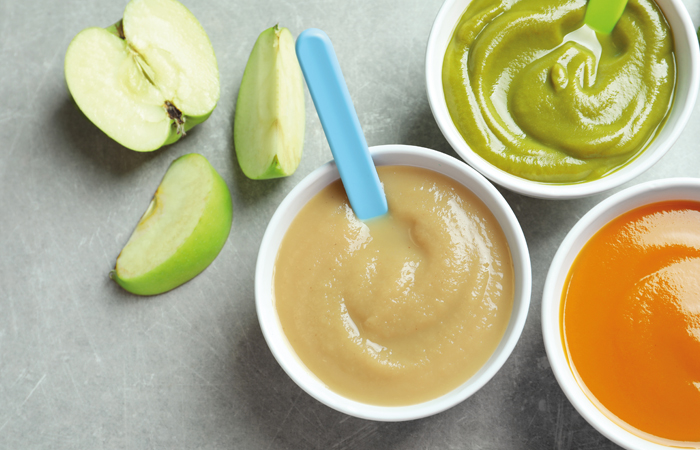Weaning

3. Homemade versus ready-made
In Weaning
Bookmark
Record learning outcomes
Choosing to give babies homemade or ready-made food is often a big decision for parents
Some research has suggested that mums feel a sense of guilt when buying ready-made baby foods. In addition, the research found that mums often buy baby foods out of convenience, as a distress purchase or ‘just in case’. While convenience when out and about is a key benefit of ready-made food, it can also help to offer variety and introduce little ones to new tastes and ingredients.

To reassure parents, advise them that ready-made baby foods are specifically designed to meet the nutritional requirements of infants and young children. They are carefully prepared to ensure they provide the right balance of nutrients in appropriate amounts and use high-quality, baby-grade ingredients to do so. Parents can check the labels of infant foods to make sure they’re happy with the ingredients.
When it comes to advising parents, there is no right answer – the decision will be whichever works best for the parents, which will usually be a combination of homemade and ready-made food. A huge variety of ready-made foods are available, from cereals to savoury meals as well as desserts and snacks. All products will have a suitable age range on the packaging, as follows:
- From four to six months
Products have a smooth texture and are suitable for babies just starting to wean. Some are made with one ingredient so babies can get used to individual tastes.
- From six months plus
Products have a slightly thicker texture, and will start to introduce babies to basic proteins, such as cheese, and to more complex tastes. Parents can also start to introduce meat.
- Seven to nine months plus
Products have a mashed texture. Soft, cooked meat such as chicken, and mashed fish can be introduced, as well as pasta, noodles and rice. These foods have different flavours to help develop babies’ palates.
- 10 to 12 months plus
Products contain small, soft chunks and lumps to develop babies’ chewing skills.
- 12 months plus
Products contain much larger lumps of food to further develop the child’s ability to chew. Flavours are more adventurous and closer to family meals.
When it comes to advising parents, there is no right answer – the decision will be whichever works best for the parents
Healthy homemade food can get babies used to the type of food the family eats. When making baby food, it is a good idea to make up batches to provide several portions of the same meal that can be refrigerated or frozen for future use.
When preparing food for the freezer, it’s important to cool the food down quickly by placing it in an airtight container and holding under a cold running tap, stirring the contents occasionally. This should be done within one to two hours. Food stored in a fridge should be used within two days and if kept in a freezer, it will need to be used within three months. Food should be thoroughly re-heated (only once) to ensure that it is piping hot all the way through, and then left to cool before feeding it to the baby.
